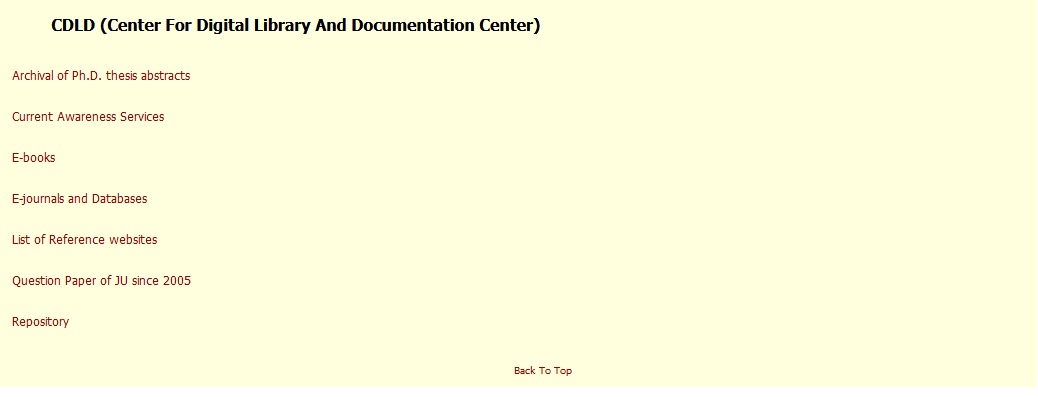Advanced Protein Technology M.Tech Question Paper : jaduniv.edu.in
Name of the University : Jadavpur University
Department : Food Tech & Bio-Chemical Engineering
Degree : M.Tech
Subject Name : Advanced Protein Technology
Sem : II
Website : jaduniv.edu.in
Document Type : Model Question Paper
Download Model/Sample Question Paper : https://www.pdfquestion.in/uploads/dspace.jdvu.ac.in/6571-Advanced%20%20Protein%20%20Technology.pdf
Advanced Protein Technology Question Paper
M. TECH. (F. T. B. E.) Examination, 2008 :
2nd Semester :
Time : Three hours
Full Marks : 100
** Answer any five of the following
Related : Jadavpur University Advanced Microbial Technology M.Tech Question Paper : www.pdfquestion.in/6570.html
All questions carry equal marks. :
1. Discuss the relevance of new food product development with the following functional properties of proteins
i) Emulsifying properties
ii) Solubility.
Explain quality of baked product with foaming characteristics of proteins used.
2. Explain secondary and tortiary structure of proteins. Discuss the features of alpha helix and beta pleated sheet.

3. Explain with line diagram the process for ultracentrifugation system to determine the sedimentation coefficient of proteins. Compare the sedimentation coefficients of salt solable legume proteins.
4. Explain the following :
i) Dexaturation of proteins and its effect on functional properties.
ii) Single cell protein as protein supplement for more food production
5. Explain with line diagram the major operations involved for production of Fish Protein Concentrate (FPC). Discuss the reasons why FPC could not be effectively utilised for new protein foods productions.
6. Compare the production and properties of proteins made from
i) ISO electric precipitation
ii) Ultra filtrations and
iii) Pinmilling Air classification methods.
Discuss the production of leaf proteins.
Principles Of Food Preservation
** Preservation by removal of heat- freezing process, rate of freezing, effects of freezing of foods, preliminary introduction to freezers and cold storage, dehydrofreezing, glass transition temperature, cryopreservation and cryoprotectants, lyophilization, antifreeze proteins, frozen storage and thawing of foods.
** Preservation by addition of heat- basic concepts of thermal destruction of microorganisms – D, Z and F values, assessment of adequacy of thermal processing of foods, canning and retorting of foods –construction of sanitary tin cans and retort pouches, testing of cans, can lacquers and can sealing compounds, spoilage of canned foods, cooking, blanching, pasteurization, sterilization of foods, extrusion, baking, roasting, frying, dielectric, ohmic, microwave, pulsed electric field, infrared heating and extrusion cooking.Preservation by removal of water- water activity and its effect on keeping quality of foods, sorption isotherms and their use, effect of dehydration on foods, dying techniques, factors affecting rate of drying, preliminary introduction to types of dryers and their suitability to different foods, intermediate moisture foods.
** Preservation by irradiation – sources of radiations, units and doses, effect on microorganisms and different nutrients, dose requirements, safe limits at regulatory issues, irradiation mechanism and survival curve of microorganism post irradiation.
** Other methods of preservation- curing, pickling, smoking, fermentation, addition of chemical preservatives, high pressure processing, hurdle technology.
Chemistry Of Food Laboratory
Errors and accuracy in analysis food materials. Sampling not contents and preparation of samples for analysis. Determination of moisture, ash, lipids, nitrogen (Protein and non protein) reducing and non-reducing sugar in samples of foods. Estimation of iodine value, saponification value, acid value, non-saponifiable matter, soluble and insoluble acids, neutralisation values, reichert value and Krischner value in fats and oils.
Estimation of iron, phosphorus, copper, lead, arsenic and tin. Estimation of ascorbic acid, nicotinic acid, pyridoxin, thiamin, riboflavin vitamin A, choline and carotene, detection and estimation of amino acids, chlorophyll and carotenoids by paper and column chromatography. Estimation of activity of Papain, taka-diastase, pancreatin and phosphatase. Study on the effect of temperature pH and substrate concentration on enzyme activity.
Principles Of Food Preservation :
General introduction to food technology. Construction of sanitary cans and testing of cans, can lacquers and can scaling compounds. Preservation by application of heat. Various canning techniques.
Dehydration, water activity of food, intermediate moisture food. Preservation of food by removal of heat, cold storage and freezing including cryogenic freezing of food. Curing oicklling. Preservation by ionization radiation use of chemical and preservatives in food preservation. Preservation by fermentation.